What Can Deeds Tell Us?
Deeds are often a neglected historical source. This is because their physical format can be quite off-putting. They employ a technical language which can be long and repetitive, they can be large and cumbersome in size, the form of handwriting employed may be difficult to read. However, most deeds follow a basic structure and form and are more accessible than they may at first appear. For those prepared to persevere, their research potential is wide and varied, and includes the following areas:
Land History
Deeds are an important source for the history of land. They can illustrate the growth and consolidation of estates and reveal details about how the land was managed and cultivated. They can also give insights into patterns of land ownership, changes in agricultural practice, and changing land values.
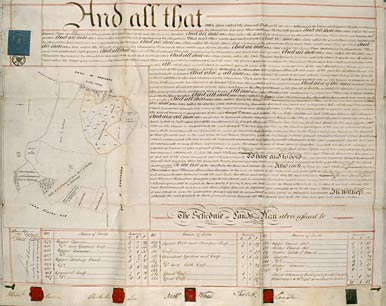
Conveyance, Kirkby-in-Ashfield, 1852 (Pl E12/6/18/7/14) with detail below
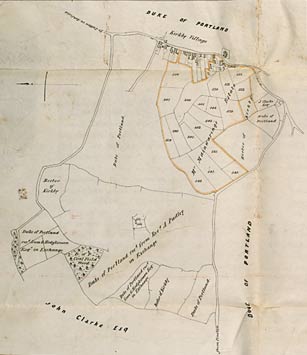
Urban History
Deeds can provide information on urban history. Industrial and residential development can be charted, differing patterns of building emerge, the social character of different parts of towns can be traced, and marginal plans may show developments in architecture or may enable the reconstruction of the layout of a particular area.
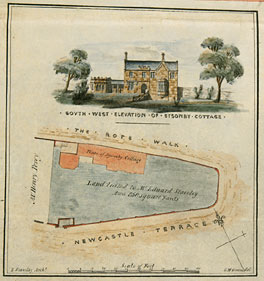
Lease of property in The Park, Nottingham, 1829 (Ne 6 D2/37/245)
History of Particular Buildings or Houses
Deeds provide a vital means of tracing the history of a particular building or house, including information on previous owners, previous uses and even previous rights associated with the property. They can contain exacting descriptions of the property at a particular date, perhaps even including lists of fixtures and fittings.
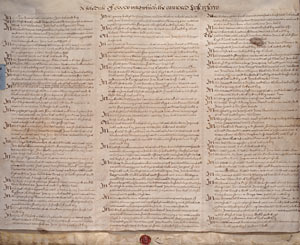
Schedule of fixtures, Soho Square, Middlesex, 1711 (Pl E10/2/1/1) with detail below

Financial Information
Deeds can contain a wealth of financial information, revealing changing property values, changing patterns of investment and also patterns of lending and borrowing. From deeds, for example, it is possible to chart the development of 'friendly' and 'building' societies, to see how urban development was financed, to investigate the financial independence or otherwise of women, or to chart the changing social patterns of property ownership.
Place Names and Topography
Another important feature of deeds is the information they provide about place name developments. Archaic spellings are preserved, the supplanting of one place name by another can be traced and evidence is provided of places which apparently no longer exist. Deeds also assist in the study of changes in local topography. They may contain information which illustrates the transition from strip farming to the enclosed field system, they may show where the course of a river has been diverted or where boundaries have been revised.
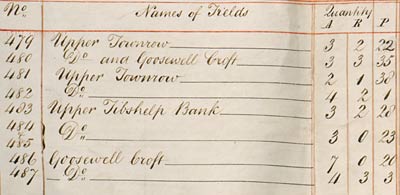
Detail from conveyance, Kirkby-in-Ashfield, 1852 (Pl E12/6/18/7/14)
Information About People
Deeds contain a substantial amount of information about people. They can list the names of owners, occupiers and subtenants of particular properties, and will sometimes include names which relate to adjoining properties. These names will often have other information associated with them, such as an explanation of family relationships or details of occupations. Thus for genealogists, deeds can help to build up rounded portraits of the names included on the family tree. They also reveal a great deal about the structure of past societies and communities.
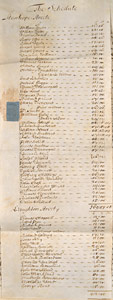
Schedule of tenants in Stanhope Street and Haughton Street, St Clement Danes, London, 1694 (Ne D 476) with detail

Next page: Skills Required to Interpret Deeds